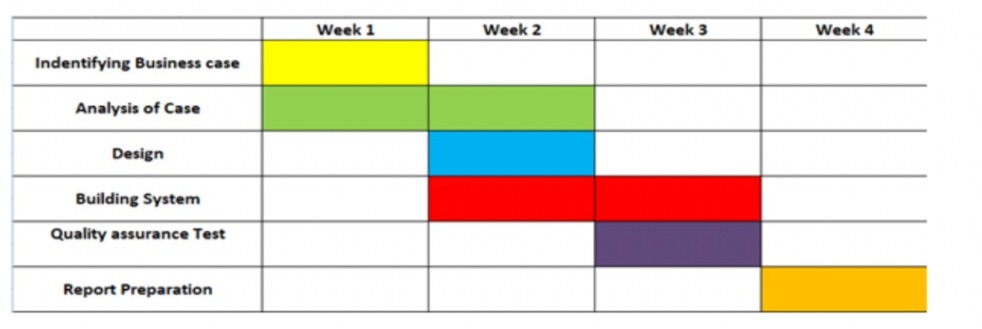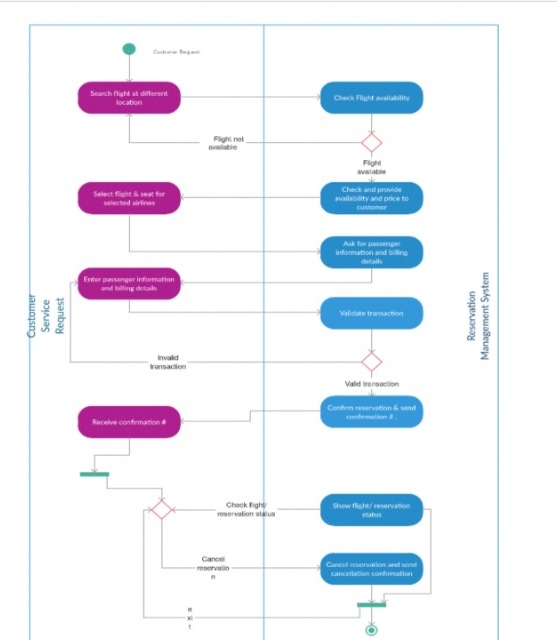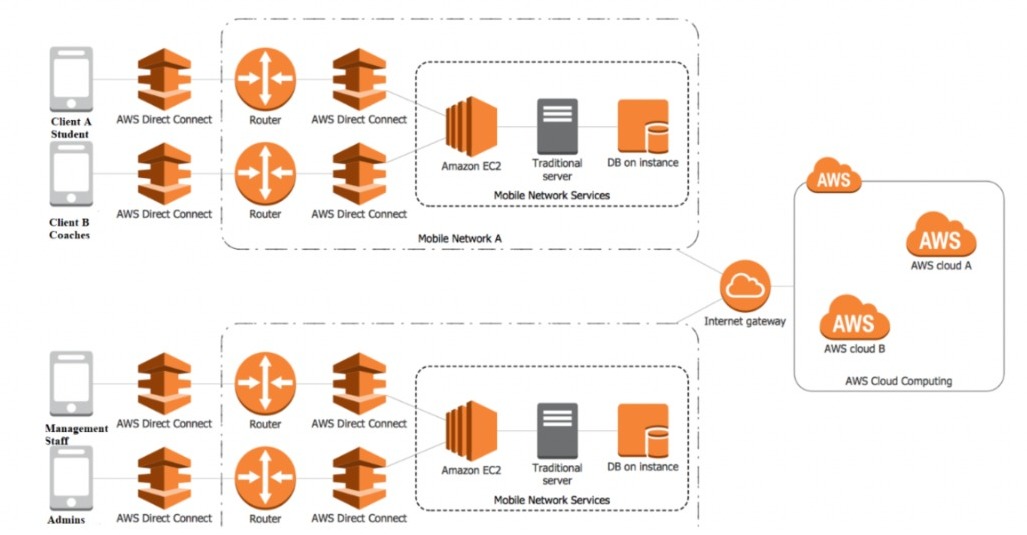CN7026 Cloud Computing Assignment Sample
HERE IS SAMPLE OF CN7026 Cloud Computing Assignment
Introduction
An airline ticket booking system serves the purpose of providing ticket reservation of different airlines through an integrated service solution where the customers can book airline tickets with ease without any hassle. This system relies on the consolidation of information from the partnered airlines utilizing a “global distribution system”.
Through these applications that inventory, as well as the real-time rates, are made visible to customers and the internal agents or brokers. This project aims to develop a web-based solution for an online reservation system for different airlines such as Air China, Delta, KLM and British Airways. This company operates in four different countries of the world, including China, Tokyo, New York and the UK.
The principle system is based on designing a cloud-based solution with which the staff, customers as well as the external companies can easily access the system and operate the system with ease and the aspects of security and reliability are ensured as well. There are several identifiable defects in the existing scenario in terms of identity and authorization issues apart from the compacted system, data loss and security issues. These are appropriately taken care of using this newly developed cloud solution. The cloud chosen for this purpose of implementation is the AWS cloud (Capello et al. 2017).
Project Plan
The timeline for the project tasks that are to be carried out is given as follows.

Fig 1: Timeline
(Source: Created in MS-Excel)
This project is divided into six components; each of which is carried out one after the other.
- Identification of the business case- At first, the problem of the system is identified.
- Case analysis- The intended area of change is focused on when the system is mapped.
- Design- This involves designing of the alternative system for approval of the solution.
- Building system- In this phase, the cloud architecture is developed, and the proposed method is implemented.
- QA Test- This is the testing phase, where the design system is tested.
- Report preparation- based on the design outcome, the report is prepared.
Cloud Architecture Solution and Implementation
Requirements Collection
Based on the presented problem, there are several functional as well as non-functional requirements to solve the issue; these are stated here as follows.
- Database- Using Oracle SQL or AWS Database
- Hosting platform or browser – Internet Explorer 8 and above or Google Chrome latest version (Jan et al. 2018)
- Development and deployment environment- Amazon Web Services
- Steady internet connection
- Technical expertise – Knowledge regarding all three types of cloud application like SaaS, PaaS and IaaS.
- Hardware resources- Desktops, Cables, Routers and so on.
- Tools- Charts and online drawing tools used for system architecture design
There are several aspects of this design that are to be addressed with the help of these resources.
Selection of Cloud platform of choice
For the purpose of implementation of the idea selected for the project, the AWS cloud services platform, which is an IaaS/PaaS based service solution which is utilized here. The benefits of using this are in terms of reliability, scalability and inexpensive operations.
There can be several applications that are available through this cloud service provider which can be used to get the desired solution. The types and features of the AWS that are implemented here for the deployment of the airline reservation system are based on the application services, database, computing storage and deployment management (Stahle and Aluvii, 2019). This would give rise to a robust and dependable source for data integration and management solution that can help the company to function at a remote location with the help of a secure and reliable network in a very cost-effective manner.
Selection of Standards and Data centre
An appropriate data centre is essential to maintain the customer records and the details of the management decision made by the company as well as the employee records. Through this cloud system, the booking process can be automated entirely as the route selection, broker selection as well as assigning the right kind of services can be made accessible (Lins et al. 2016). For the implementation of the system,
the amazon data lake and the data pond are selected within the cloud, which can be utilized to store the data information. The data is redirected to the pool by using the “Amazon kinesis Data Firehose”. Since the design principle of AWS complies with the following list of standard programs, therefore, the web-based design solution created here must conform to these standards as well.
- “SOC 1/ISAE 3402, SOC 2, SOC 3”
- “PCI DSS Level 1”
- “FISMA, DIACAP, and FedRAMP”
The architecture of the Cloud system
Best practices followed
The following are the best practices that have been adhered to while developing a comprehensive solution for the cloud-based airline ticket reservation management system.
- The excellence of Operation- The business outcomes must be supported, and the design solution must provide a timely response which shall be in line with the priority of the business and the needs of the customers who wish to book the tickets.
- Security- Data protection must be ensured through the process of providing confidentiality of data as well as data integration. It must be guaranteed that any financial loss or resource loss is prevented either proactively or reactively (Widjaja et al. 2019).
- Reliability- Every foundational requirement that can affect the safety of the system is checked before the order is modulated. The design system must be capable of recovery, and horizontal scaling must be implemented.
- Performance Efficiency- The design choices shall be reviewed on a cyclical basis to make use of the evolving nature of the AWS cloud. Through the relaxation of consistency requirements or compression as so on the performance of the system can be enhanced.
- Cost optimization- More managed services shall be used to reduce the cost incurred in ownership. To save cost usage of appropriate resources must be ensured. For every functional requirement, the “cost over time and efficiency” model must be referred to (Dindu et al. 2017).
System design and System architecture
The system design architecture is given as follows.

Fig 2: System Architecture
(Source: Created in Creately.com)
Problem analysis
In the existing system, the main issues are based on the usage of an old file-based system where the record of every customer is stored. This is to be replaced by an online file management system. The existing system lacks flexible operation, wherein case if an airline ticket is not available for a particular date, other options are provided to the client.
This requires an automated cloud-based solution which would compare the database records of the airlines to comply with the travel requirements and display the options to the customers. Online purchase of tickets was not there before and is to be implemented now (Cermak et al. 2020).
There was also a lack of integrity in the old system and location disadvantages. Now in the new system, the manager corresponding to every concerning booking officer reviews the travel required and based on availability, the expected is approved or rejected. This can be done from any location remotely, thereby offering a flexible solution.
Rationale
The primary purpose is to provide a comprehensive design solution for the company operating in different locations to manage the process of online airline ticket reservation system by ensuring proper security, reliability and efficiency in a cost-effective manner.
Cloud Architecture (sourceforge.net, 2020).
Implementation Details

Fig 3: Design Implementation
(Source: Self-created)
The designed system consists of 2 layers, the S and the M layer. The data enters the system through “Amazon Route S3” then through a load balancer, it gets distributed to different portals like the admin portal, booking portal, the payment portal and so on. These portals are managed through one security layer. There are built-in interconnections between these layers for interactions. The Amazon S3 bucket supports them for data integration, and the overall system is managed through another security group (ir.kdu.ac.lk, 2018).
Analysis and Reflection
This project is completed by nearly 80%, and the remaining 20% is scheduled to be completed within a week. Through effective implementation, the following purposes are fulfilled.
- Business management- The booking process of the customer is streamlined. A cloud data pool is used to store the records of the customer as well as the airline’s preference. In this way, the employees can access the database and align the airline selection of the customers with their service offered. The bookings are managed in a way such that the individual staff seek approval from the managers to confirm the booking through this cloud-based platform. After approval, the designated tickets are provided if not; then other airlines are offered. The designing of feedback collection service is still pending.
- Technology infrastructure- Easy to operate and attractive system design is offered. The customers can get an interactive interface which is mostly automated to get proper assistance and submit their feedback.
- Organization operation – Mechanism of the booking system is redesigned, and the workflow is pipelined through the cloud-based solution (Widjaja et al. 2019). However, in the existing design, the brokers are not permitted to operate individually and externally to restrict security issues like DoS attacks or malware. Still, this feature is to be included later. At this moment, the cloud service is designed for access of customers, managers and customer relationship officers.
Conclusion
This piece of work showcases the design aspects and the developmental process of a cloud-based airline ticket reservation system. The new system is developed on the AWS platform by making use of the AWS cloud-based tools and other functionalities that give rise to comprehensive solutions for the existing organizational issues in terms of flexible, reliable, safe and efficient operations.
Reference List
Journal
Capello, E., Dentis, M., Guglieri, G., Mascarello, L.N. and Cuomo, L.S., 2017. An Innovative Cloud-based Supervision System for the Integration of RPAS in Urban Environments. Transportation Research Procedia, 28, pp.191-200.
Cermak, A.X., Burris, E.L. and Carlini, D.B., GM Global Technology Operations LLC, 2020. System and method for providing a telematics service using third-party authentication. U.S. Patent Application 16/186,660.
Dindu, P., Chennam, S., Dara, M., Bodempudi, S. and Lingareddy, L., 2017. ROBUSTNESS FRAMEWORK FOR DYNAMIC QUALITY BASED SOFTWARE SERVICES. International Journal of Pure and Applied Mathematics, 116(5), pp.121-126.
Jan, W., Cook, G. and Irvin, B., Oracle International Corp, 2018. Multi-tenant cloud-based queuing systems. U.S. Patent 10,063,661.
Lins, F., Damasceno, J., Medeiros, R., Sousa, E. and Rosa, N., 2016. Automation of service-based security-aware business processes in the Cloud. Computing, 98(9), pp.847-870.
Stahle, M., Aluvii Inc, 2019. Cloud-based system and method for managing entertainment parks. U.S. Patent Application 15/689,820.
Widjaja, A.E., Chen, J.V., Sukoco, B.M. and Ha, Q.A., 2019. Understanding users’ willingness to put their personal information on the personal cloud-based storage applications: An empirical study. Computers in Human Behavior, 91, pp.167-185.
Online articles:
ir.kdu.ac.lk, (2018) Data Handling and Maintaining Data Consistency in Scalable Replicated Micro-Services, Available at: http://ir.kdu.ac.lk/bitstream/handle/345/2519/Untitled(37).pdf?sequence=1, [Accessed on: 29.05.20]
24/7 Chat Support | Get A+ Grade | Written by Top-Notch Subject Experts | 20% Off 1st Order |
Know more about UniqueSubmission’s other writing services:

